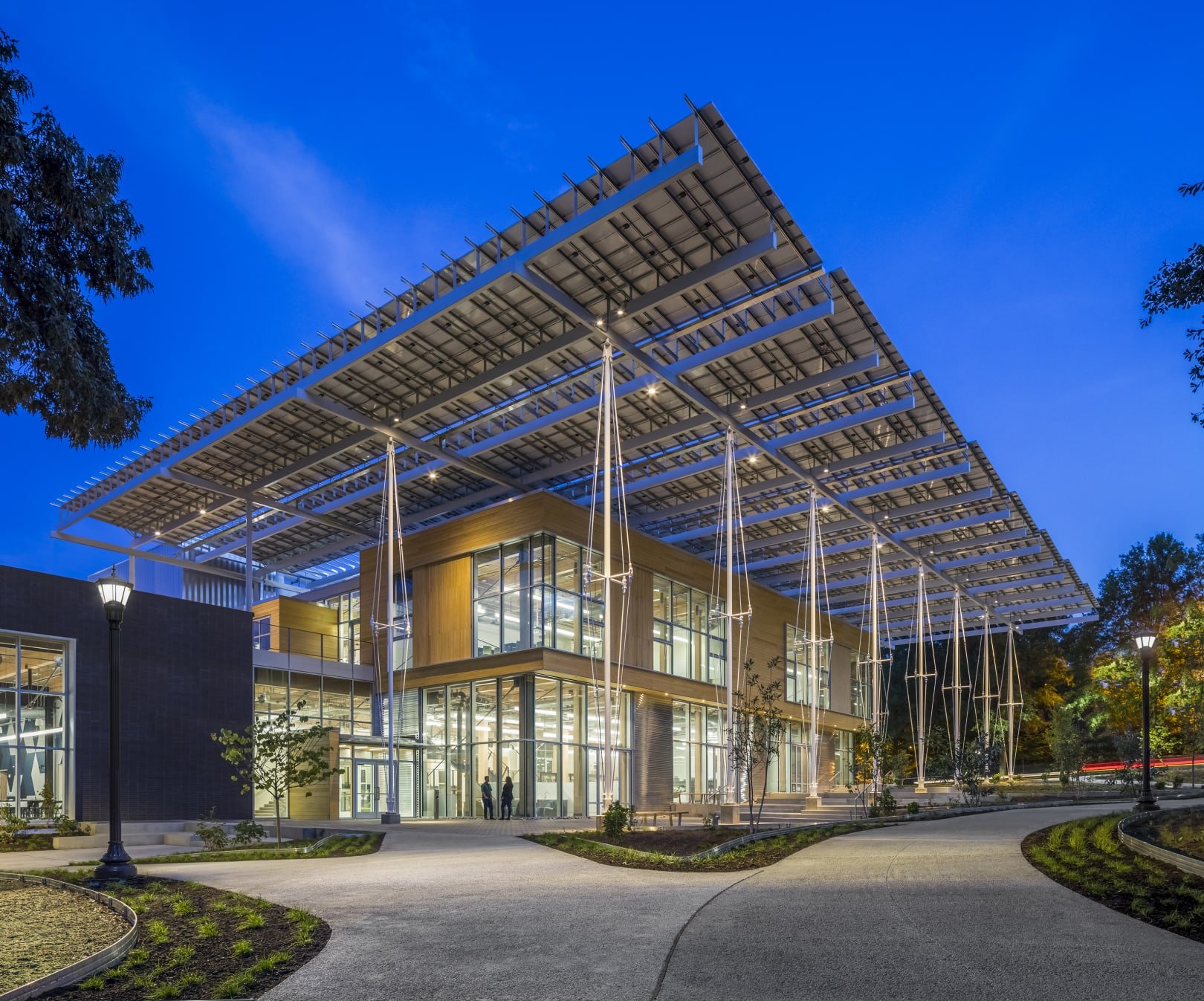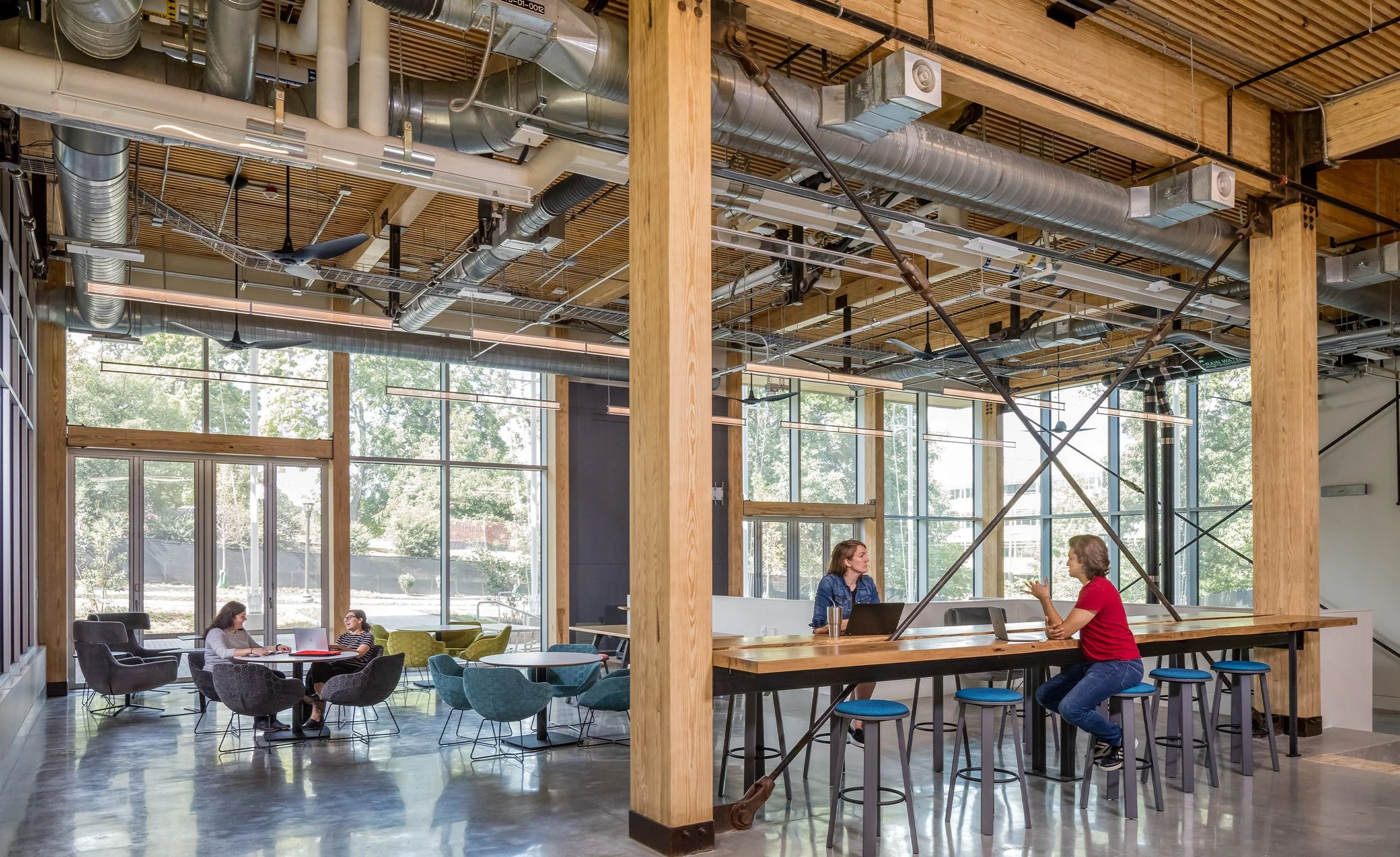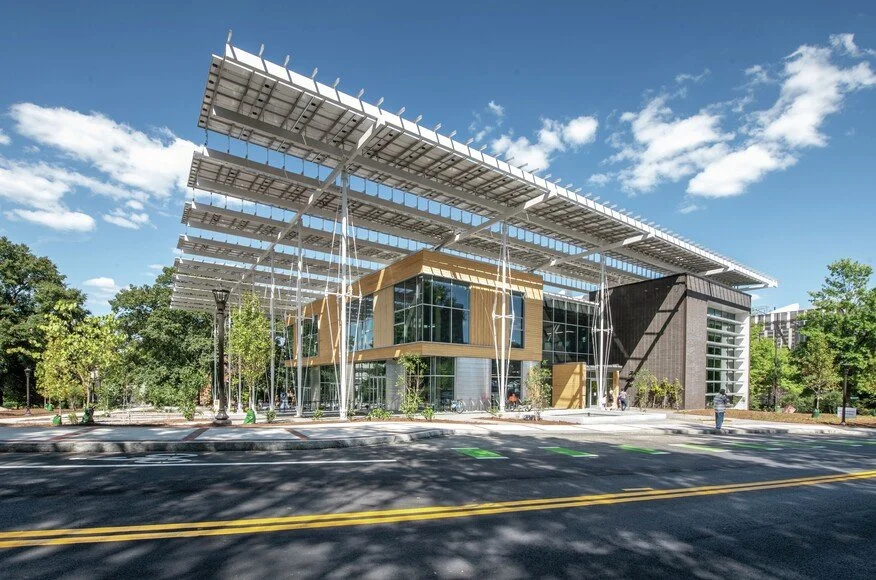
How might we design buildings that have a positive impact on the environment and the people who use them?
Kendeda Living Building for Innovative Sustainable Design
Miller Hull Partnership and Lord Aeck Sargent
Georgia Institute of Technology
Atlanta, GA
2019
The Living Building Challenge (LBC) asks if the buildings we inhabit can make us healthier and happier, while also restoring ecosystems and protecting the planet. It is a certification process created by the International Living Futures Institute.
In order for a building to be certified as “Living Building” it must restore a healthy interrelationship with nature, have net positive water and energy use, optimize the well-being of its users, support a just and equitable world, uplift the human spirit, and be constructed of materials that are safe for all species through time.
The Kendeda Building for Innovative Sustainable Design was the 28th building in the world to be certified as a Living Building. Located on the Georgia Tech campus, it is filled with classrooms, research labs, and gathering spaces.
At least 50% of the materials used to create the building are local. Some are salvaged, including wood from the Georgia Tech bell tower and dismantled movie sets.
The building generates twice as much energy as it uses yearly through a giant array of solar panels. Other facilities on the Georgia Tech campus use the excess electricity. It also puts 15 times more water back into the ground than it uses each year, and has a roof garden with bees and edible plants tended by students.
Large windows provide natural lighting and views of nature. Windows and doors open wide to bring fresh air into the building.
-
WEBSITE
Kendeda Building for Innovative Sustainable Design: www.livingbuilding.gatech.edu
TED TALKS
Living Buidlings for a Living Future by Jason McClennan
Living Buildings: The Future of Architecture by Jason McClennan
VIRTUAL TOURS
Photos by Jonathan Hillyer, Courtesy of Lord Aeck Sargent






